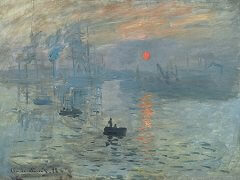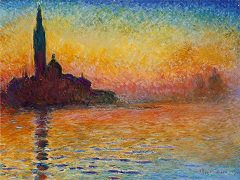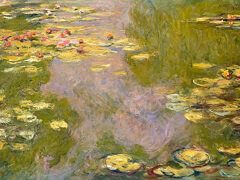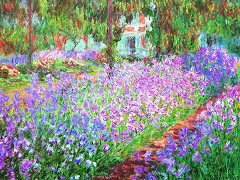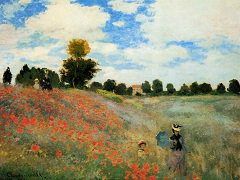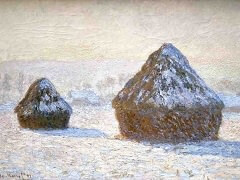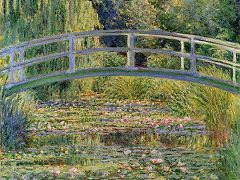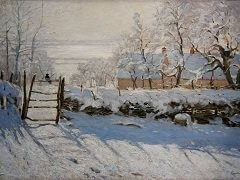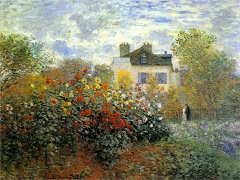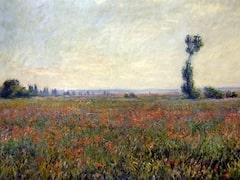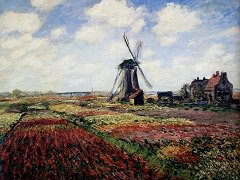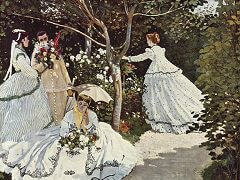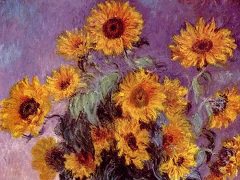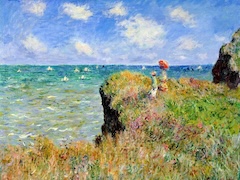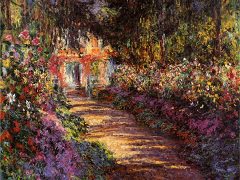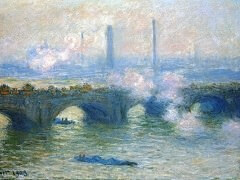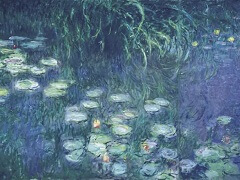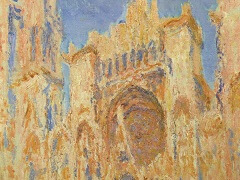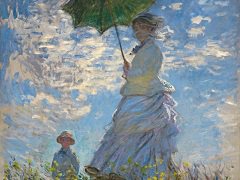The Garden at Sainte-Adresse, 1967 by Claude Monet
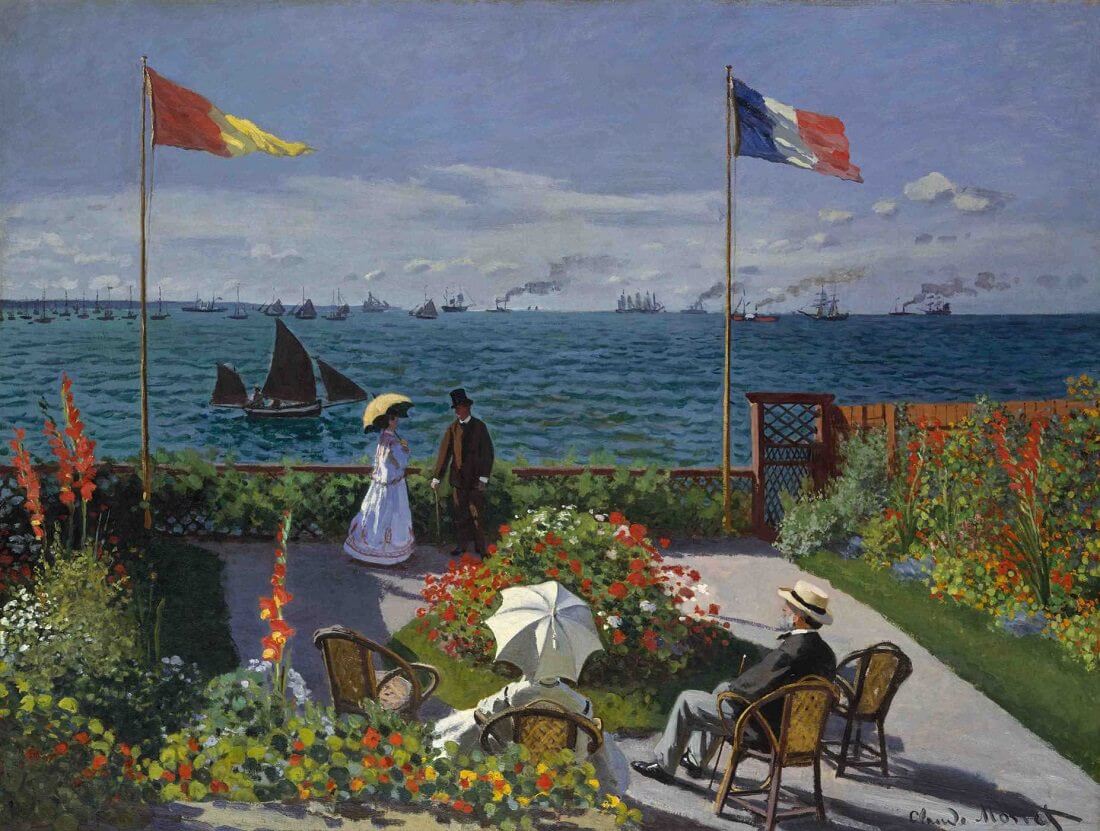
Monet spent the summer of 1867 at the resort town of Sainte-Adresse on the English Channel, near Le Havre (France). It was there, in a garden with a view of Honfleur on the horizon, that he painted this picture, which combines smooth, traditionally rendered areas with sparkling passages of rapid, separate brushwork, and spots of pure color.
Scenes of the fashionable bourgeoisie at leisure were a favoured subject matter for many of the young artists of the day. Although Monet later abandoned these subjects, he painted them with enthusiasm, nearly always choosing scenes involving either water, flowers or landscape.
Glimpses of Monet's future artistic development can be seen in his treatment of the flowers, wrought in vibrant colors with short, blocky brushstrokes. In contrast, the figures and the garden furniture are tightly painted and sharply delineated with much use of white highlights.
Monet called this work in his correspondence "the Chinese painting in which there are flags"; his friend, Renoir referred to it as "the Japanese painting". In the 1860s, the composition's flat horizontal bands of color would have reminded the sophisticated of Japanese color wood-block prints, which were avidly collected by Monet, Manet, Renoir, Whistler and others in their circle. The print by the Japanese artist Katsushika Hokusai that may have inspired this picture, "Turban-shell Hall of the Five-Hundred-Rakan Temple" (1830), remains today at Monet's house-museum at Giverny.

